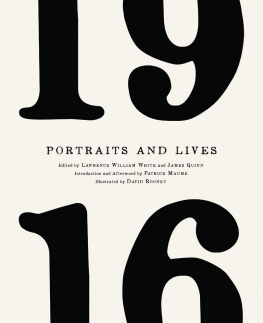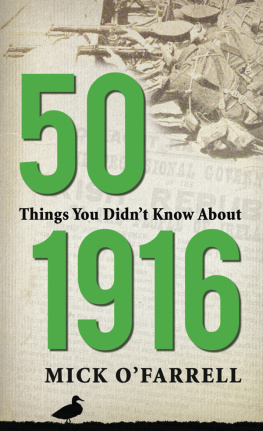1916 IN 1966
COMMEMORATING THE
EASTER
RISING
Edited by
Mary E. Daly and Margaret OCallaghan

I NTRODUCTION
I RISH M ODERNITY AND THE P ATRIOT D EAD IN 1966
Mary E. Daly and Margaret OCallaghan.
It is, I believe, almost impossible for any one of my generation to think about 1916 as an actual event in history, discrete and autonomous. The way in which 1916 had been presented to us was an important process in our understanding of the nature of our society, and of ourselves. For my generation, the events of Easter 1966 were crucial, so much so that I think it is almost possible to speak of a generation of66.
Every night during Easter week 1966 our family watched the drama documentary
T his collection of essays looks at the golden jubilee in 1966 of the Easter Rising of 1916. That commemoration is indelibly imprinted on the minds of all who lived through it, but is virtually unknown to those born later in the last century. They, however, have heard it evoked to buttress one ideological position or another on 1916 itself, on the Irish nationalist tradition, on the North; by historians, journalists, commentators. Much of the battle for control of the representation of the history of modern Ireland and its profound connection with debates about the North is incomprehensible if the commemoration of 1966 is ignored. The struggle for control of the representation of the nature of the 1966 commemoration has accreted to the debate on 1916 itself in a way that has made it constitutive of it. Such a phenomenon is not unique to Ireland, but in the past three decades the debate about the meaning of commemoration in relation to the state or the nation may have been more immediate and more passionately contested in Ireland than elsewhere.
The historian, and editor of a highly influential work on the politics of commemoration, John Gillis has written
[c]ommemorative activity is by definition social and political, for it involves the coordination of individual and group memories, whose results may appear consensual when they are in fact the product of processes of intense contest, struggle, and in some instances, annihilation.
Commemorations are ostensibly about memory and remembering, but neither remembering nor memory itself is unproblematic, as the work of the French historian Pierre Nora demonstrates. Nora tried to produce a new kind of French history in the years from 1984 to 1992. It was a collective venture involving over a hundred scholars that sought to tell the history of France through what he called lieux de memoire, or sites or repositories of memory. In the introduction to the three-volume, American-English edition of the original seven volumes published in French as Les lieux de memoire, he writes
[t]he point of departure, the original idea was to study national feeling not in the traditional thematic or chronological manner but by analyzing the places in which the collective heritage of France was crystallized, the principal lieux in all senses of that word, in which collective memory was rooted, in order to create a vast topology of French symbolism.
He goes on to state that ...I took it (the phrase and concept lieux de memoire) from ancient and medieval rhetoric as described by Frances Yates in her admirable book The Art of Memory (1966) which recounts an important tradition of mnemonic techniques. The classical art of memory was based on a systematic inventory of loci memoriae or memory places. The Irish language already has a term for what Nora is talking about: dinnseanchas or lore of place, actual sites of memory through which pasts can be entered or reconstructed.
If adapting Nora for Irish purposes it is immediately clear that the Easter Rising of 1916 has been the key site of memory in twentieth century Ireland, rivaled only perhaps by the border. The Rising has been embraced, repudiated, analysed, retold, contested, investigated, dismissed and lauded. There is endless fascination with its history, its ephemera, its traces and residues. But more importantly, and often regardless of its history in the narrow sense of what occurred, 1916 has been a ground of contestation and a battle site for representation. The representation of 1916 has been at the centre of debates about how Irelands past was to be understood in the last three decades of the twentieth century. That debate frequently took place through a debate about what had actually happened in the commemoration of 1966. The subtext of the discussion was whether or not the commemoration of 1966 had in fact caused the Troubles. The story of these debates and contestations has its own history that has yet to be told. We thought that one way of beginning that telling was through an attempt to trace the foundational anthropological moment in that debatethe commemoration of the Easter Rising by the Irish state in 1966.
On Easter Sunday (8 April) 2007, an estimated 7,000 spectators turned out to watch an hour-long official ceremony to mark the ninety-first anniversary of the Easter Rising. According to the Irish Times, the multicultural crowd included Army veterans in wheelchairs, vast numbers of Poles and Chinese, and a generous smattering of English and American visitors. Presumably some Irish civilians were also present. The low-key ceremony contrasted with the more elaborate celebrations marking the ninetieth anniversary in 2006, when an estimated 100,000 spectators crowded Dublins OConnell Street to watch an elaborate military parade. The ninetieth anniversary sparked a wide-spreadthough short-liveddebate on the appropriateness of commemorating the Easter Rising, because 2006 saw the revival of the official military parade on Easter Sunday, which had been abandoned in the early 1970s because of the Troubles in Northern Ireland. For those who had experienced the golden jubilee, the 2006 ceremonies inevitably prompted memories of the last major commemoration of the Rising. For those who had not experienced 1966, the 2006 commemoration was something quite new.
Speeches by the respective Fianna Fail taoisighSean Lemass and Bertie Aherncontained remarkably similar messages. While formally acknowledging the importance of remembering the past, the primary focus in both instances was on the present and the future: commemorating the past with a view to understanding the present and planning for a future that would build on the legacy of 1916 and of the founders of an independent, democratic Ireland. Both leaders emphasised the messages in the 1916 Proclamation and the continuity between the principles expressed in the Proclamation (religious and civil liberties; equal rights and opportunities) and the independent, democratic and successful Irish state, playing down rebellion and bloodshed. Both men paid at least lip service to a commemoration that would include wider strands of Irish opinion. Lemass went to considerable efforts to involve the Protestant churches, and he referred in sympathetic tones to the Irish nationalists who had supported Home Rule. Bertie Ahern recalled the Irishmen who had fought in the Great War, and the 2006 invitation list included Ulster Unionists, though they did not attend. The presence of Sinn Fein at the 2006 event also reflected the transformation in the position of northern nationalists in relation to both states on the island of Ireland in the same period. In this sense the shadow of Northern Ireland was central to the Dublin commemoration of 2006, whilst it had lain silent, if present, in Dublin in 1966.
The upbeat, expansive commemorations of 1966 and 2006 in Dublin reflected the temper of the times: Ireland in the 1960s is now often seen as the forerunner of the twenty-first century Celtic Tiger a simplification that glosses over a long interval marked by economic crises in the Republic and the Northern Troubles. The mid-1960s also brought a significant improvement in relations between Northern Ireland and independent Ireland, with the famous LemassONeill meetings of 1965, and examples of practical co-operation between both states. Irish unity barely featured in the official speeches during the 1966 commemoration, and the Belfast and Dublin governments went to some efforts to prevent the commemoration from setting back this improving relationship. Nonetheless, the Rising was commemorated on a significant scale in 1966 by the very northern Catholics whose marginalisation from civil society in the North was about to give rise to the civil-rights movement. One of our aims in this volume has been to retrieve that northern nationalist commemoration, conducted without a state apparatus but nonetheless indicative of northern nationalist desire not to be excluded from the Irish nation, and not to acquiesce in a state-sponsored project that sought to make the Irish nation and the Irish state synonymous. The eruption of the Troubles in Northern Ireland in 1969, and the consequent aftershocks in the Republic, resulted in the 1966 commemoration being retrospectively interpreted as a factor in the resurgence of IRA military activity. This argument, most clearly enunciated by Conor Cruise OBrien in his 1972 book,
Next page
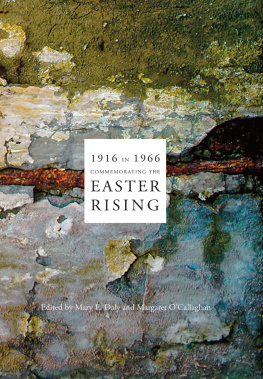
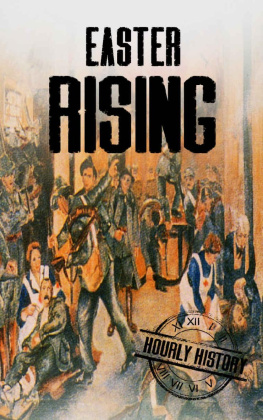


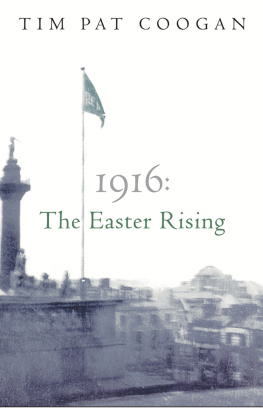
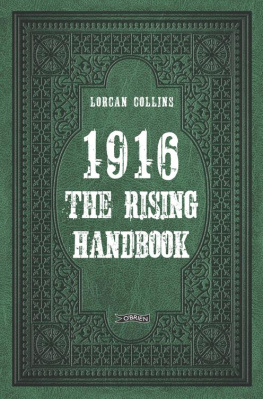
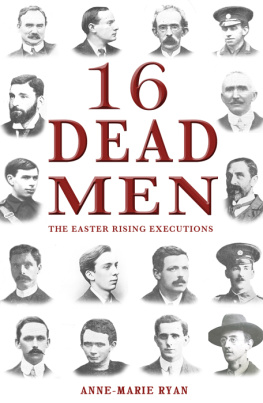
![Lorcan Collins [Lorcan Collins] - 1916: The Rising Handbook](/uploads/posts/book/143326/thumbs/lorcan-collins-lorcan-collins-1916-the-rising.jpg)
